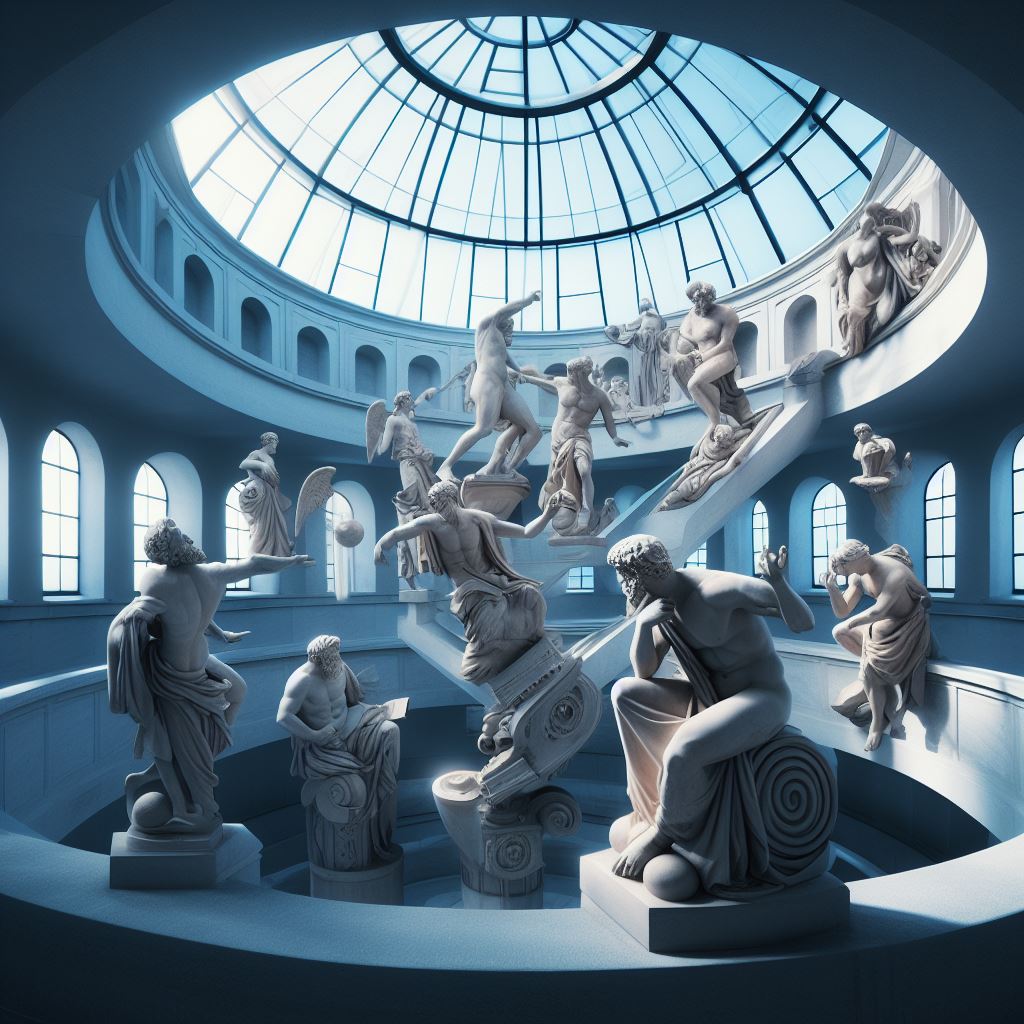The exploration of philosophical schools and their evolution is a fascinating subject that allows us to understand the development of human thought and the way it shapes our lives. In this article, we delve into the integration of New Idealism, a contemporary philosophical movement, with Ancient Philosophy, particularly the ancient philosophy of Stoicism. As we trace the evolution of Modern Stoicism, we gain insights into the ways in which these two philosophical approaches merge, offering us a holistic perspective on finding purpose, resilience, and serenity in the modern world. By investigating this integration, we hope to shed light on how the ancient wisdom of Stoicism continues to inspire and guide individuals in their pursuit of a meaningful and fulfilling life.
From Socrates to Seneca: Tracing the Roots of Modern Stoicism
- Stoicism, a philosophical school of thought that originated in ancient Greece, has had a profound influence on modern-day thinking.
- From its earliest proponents like Socrates and Seneca, Stoicism has provided individuals with practical guidance on how to live a content and purposeful life.
- By tracing the roots of modern Stoicism back to these influential thinkers, we can gain a deeper understanding of the lasting impact of this philosophy.
Bridging the Gap: Merging New Idealism with Ancient Stoic Principles
- As society continues to evolve, so too must our philosophical beliefs.
- In merging new idealism with ancient Stoic principles, we create a bridge between the past and the present, allowing for a more relevant and impactful understanding of Stoicism in our modern lives.
- By incorporating contemporary ideals into Stoic philosophy, we can address the unique challenges and complexities of our time, while still staying true to the core tenets that have made Stoicism timeless.
The Adaptation of Modern Stoicism: Incorporating New Idealism into Ancient Philosophy
- In the adaptation of modern Stoicism, new idealism is seamlessly incorporated into the foundations of ancient philosophy.
- This integration allows for a more nuanced approach to Stoic principles, as we seek to apply them to the diverse realities of our modern world.
- By recognizing that new ideas and perspectives can enhance traditional philosophy, we create a path for continued growth and relevance in Stoic thought.
Exploring the Fusion: How New Idealism Shapes the Evolution of Stoic Thought
- The fusion of new idealism and Stoic thought shapes the evolution of this ancient philosophy in profound ways.
- By engaging with contemporary ideas, we expand the boundaries of Stoic principles and allow for a richer exploration of human experiences.
- This fusion challenges us to reevaluate our understanding of virtue, resilience, and our relationship with the world around us.
- Through this evolutionary process, Stoic thought becomes a living philosophy that continues to adapt and inspire.
Idealistic Stoicism: Exploring the Integration of New Ideas into Ancient Philosophy
- Idealistic Stoicism represents the integration of new ideas into ancient philosophy, resulting in a dynamic and relevant framework for modern living.
- By embracing new perspectives, we infuse Stoic principles with a sense of idealism that empowers individuals to lead meaningful and fulfilling lives.
- This integration encourages self-reflection, personal growth, and a deep connection with the world.
- Idealistic Stoicism offers a pathway towards wisdom, virtue, and a more intentional way of being in today’s fast-paced world.
“New Ideal and Old Philosophy: Modern Stoicism”
is likely the title of a blog post, article, or academic paper. Searching for this exact title may yield results specifically related to it.
Modern Stoicism
refers to the adaptation and application of Stoic philosophy in contemporary life, focusing on concepts such as virtue, mindfulness, and the pursuit of a good life.
Origins of Stoicism
Stoicism originated in ancient Greece and Rome, with key figures like Zeno of Citium, Seneca, Epictetus, and Marcus Aurelius. It emphasizes developing inner resilience, accepting what is beyond our control, and living in accordance with nature and reason.
Comparison between Traditional and Modern Stoicism
The keyword suggests a comparison or contemplation between traditional Stoicism (old philosophy) and a new approach or interpretation (new ideal).
Intersections with Psychology and Mindfulness
The information sought might include articles discussing the intersection of modern Stoicism with psychology, mindfulness, self-improvement, or personal development.
Relevance and Application in Today’s Society
The keyword could also be related to discussions on the relevance and application of Stoicism in today’s society, addressing topics such as mental well-being, ethics, resilience, or finding meaning and purpose in life.
Additional Elements to Explore
Additional elements to explore may include specific Stoic practices or techniques, books and resources about modern Stoicism, or communities and organizations dedicated to promoting and practicing Stoic teachings in the modern world.

In Conclusion:
The integration of New Idealism and Ancient Philosophy, as seen in the Evolution of Modern Stoicism, offers a fresh perspective on living a fulfilling and purposeful life. By combining the practical wisdom of the Stoics with the transformative ideas of New Idealism, individuals are encouraged to cultivate self-awareness, examine their beliefs and values, and actively engage in personal growth and social change.
This article has explored how the incorporation of new concepts such as consciousness, interconnectedness, and universal empathy contribute to the development of a more comprehensive approach to Stoic philosophy. Ultimately, the integration of New Idealism and Ancient Philosophy provides a framework for addressing contemporary challenges and fostering a harmonious existence between individuals and the world around them.
